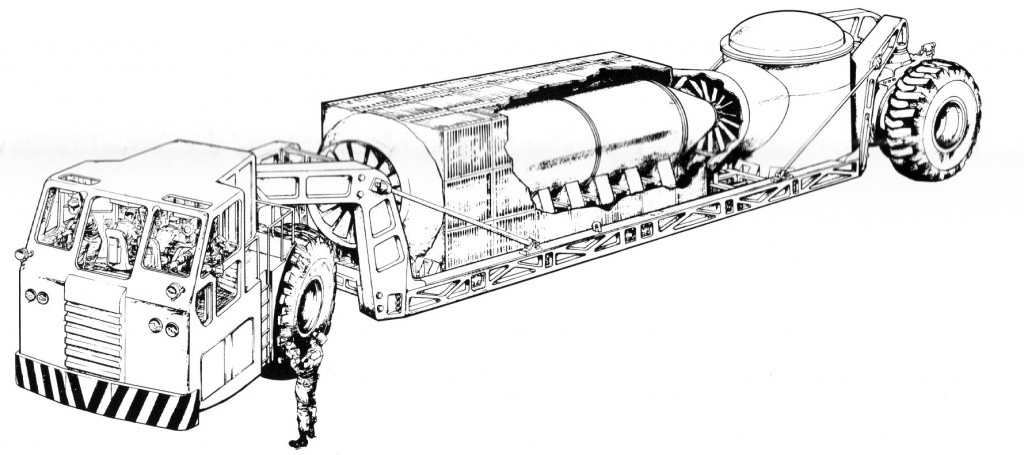In 1963, the Atomics International division of North American Aviation studied a terrestrial modification of the SNAP space-based reactor. The SNAP 4, also known as COmpact Multi-Purpose Automatic Controlled Transportable (COMPACT), had a 1 cubic foot core made of uranium zirconium hydride. The heat generated would boil water, which would drive steam turbine generators. The steam would be condensed and returned to the reactor to be boiled. The closed-loop system would in turn be cooled be either an external water source or via air cooling. Electrical power output was expected to be from 300 to 3,000 kilowatts. The core lifetime was to be from 1 to 5 years, with no maintenance required for 12 months at a stretch. The whole package would fit in an envelope 8 feet in diameter and 30 feet long, ranging from 48 to 125 tons depending on application.
The COMPACT system was meant to be a truck, train, ship, barge or aircraft transportable auxiliary or emergency power supply system (for disaster relief and such), or as primary power supply for remote locations. The claim was made that if put into production, electrical cost from the COMPACT system would be comparable to that from deisel-electric generators.
